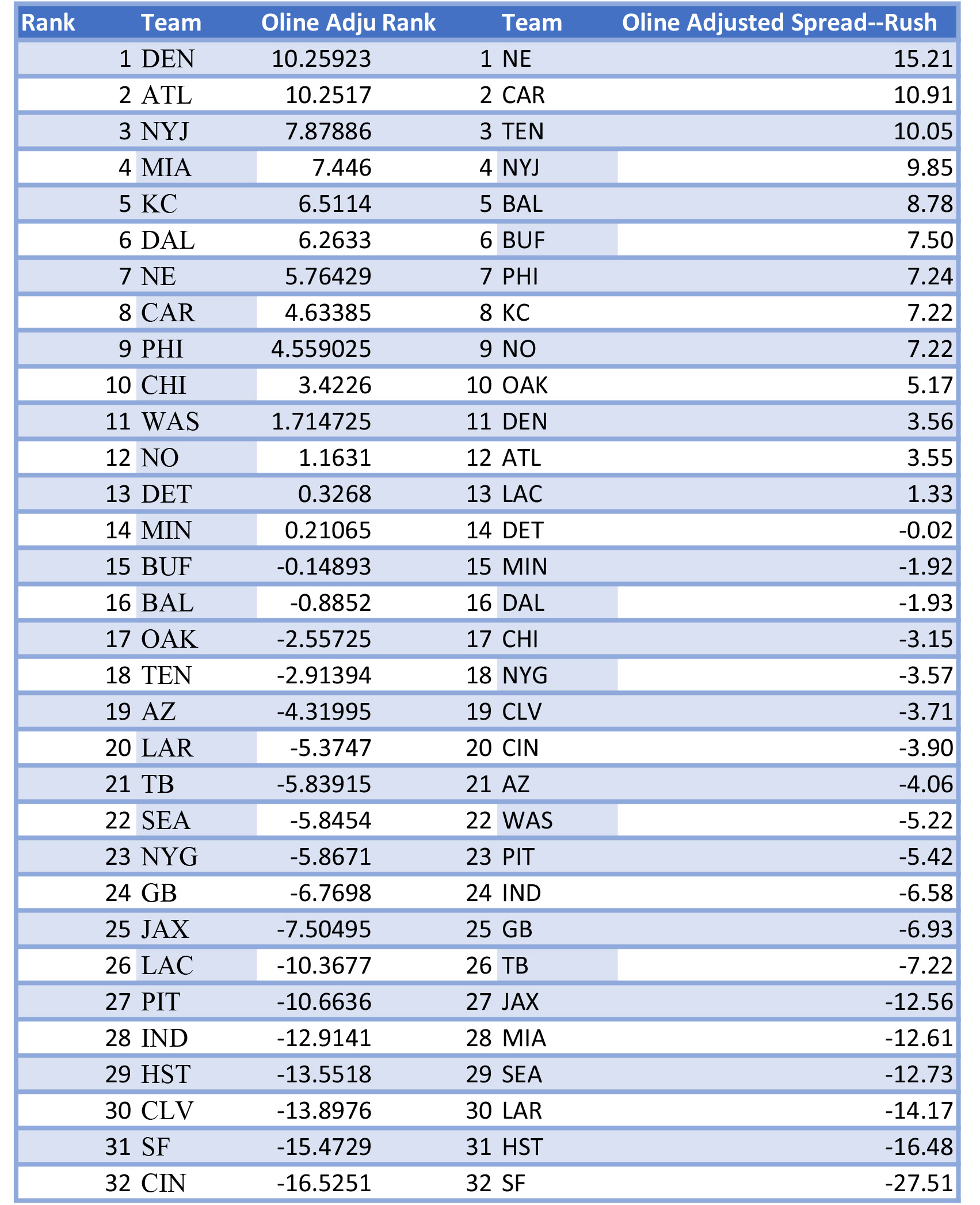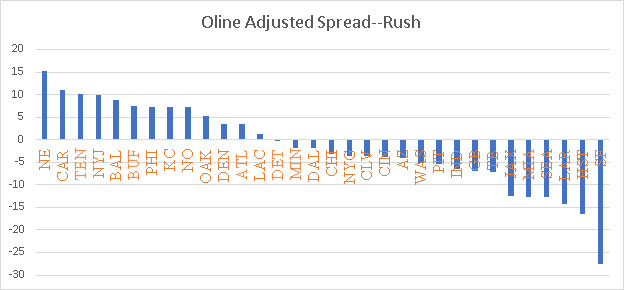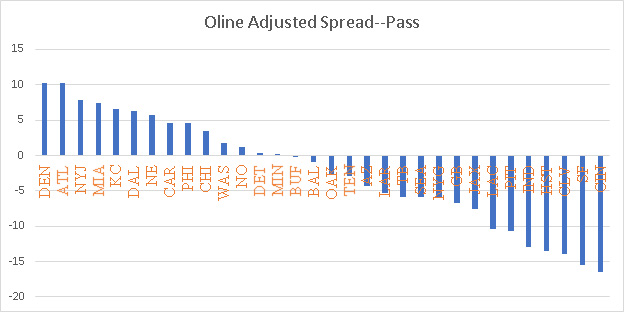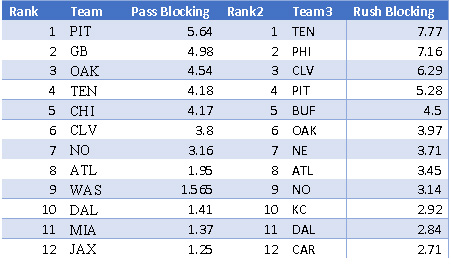AugustUpdate Camp News |
Staff Rankings
| Config Cheat Sheet
| STOMP
Draft Strategies | Depth Charts | Mock Drafts | SOS | Tools | ADP
Diehards Staff Experts Poll | Draft Simulator | University Videos
Draft Strategies | Depth Charts | Mock Drafts | SOS | Tools | ADP
Diehards Staff Experts Poll | Draft Simulator | University Videos
SOS Final spread stats, post off-season and O-line adjusted
By Adam Hall

How the final conclusion was reached.
The statistics set out in my first article in this series was an incomplete picture. Although, the pure acquisition adjusted strength of schedule via defensive productivity explains a majority of the product in the NFL from year to year, it is not the whole picture. Last year the Falcons, Titans and the Raiders had three of the best offensive lines in the NFL, but had some of the harder schedules. Regardless of their competition each team’s offensive line productivity was sufficient to help their team overtake their comparatively difficult schedule. To compensate for these impacts, I quantified each team’s expected offensive line productivity, and adjusted my previous statistics accordingly.Offensive line productivity adjustment
I used my edge subscription to pro football focus to acquire their grades of each offensive lineman in the NFL. Each player has a grade for pass and rush blocking productivity. I aggregated the grades under each subset (pass and rush) for every team, according to their depth chart on mylads.com. Once offensive line grades were aggregated I averaged each team’s performance and ranked them according to the same standardization procedure I mentioned in the first part of the series.This lead to an easy way to express how good or bad each offensive line was in the NFL. I then used a common statistical benchmark, the standard deviation to set the weight on how much an offensive line should impact the previous rankings.
The final results are depicted in the following table and graphs.
Positive scores depict a combination of ease of schedule and strength of offensive line, negative scores depict the exact opposite. A wise player drafts from teams with positive ratings within reason.


Caveats
A phenomenal quarterback with a great offensive line can help nullify many of these scores. Aaron Rodgers and the Steelers offense will likely outperform their opportunity ratings just due to their ability to outperform most competition in front of them. Though, one should expect the comparative competition to impact their dominance. Here is a list of the best ten offensive lines.The scores are depictions of standardized comparisons.

Also, a quarterback with a great passing attack, but a poor defense will force the team to pass and with it increase their quarterback, WRs, and TEs value.
Don’t draft blindly from this list, it should serve as a guide to finding value and a place to return to throughout the season to find likely places for breakouts to occur.
